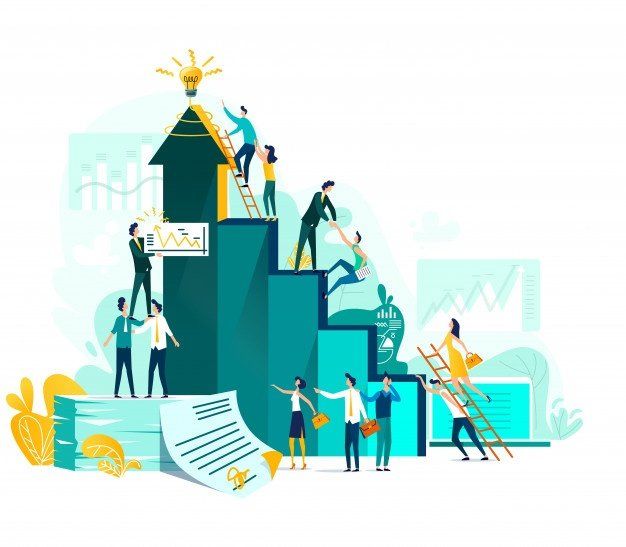Is Your Learning Future Fit?

Image by Freepik
If you added up the amount of time you spend each week learning, what would the total be? An hour, three hours, more than ten, or perhaps none?
If you are an hour or less then you are similar to many other Australians according to a report released by Swinburne University’s Centre for the New Workforce – The National Survey Report: Peak Human Workplace, Innovation in the unprecedented era.
Using data they collected before the pandemic, the researchers reveal that three in five workers are worried their current skill set isn’t suited for the next five years. Despite this, more than half of the Australian workers surveyed spent less than an hour a week on any form of learning, with 58 per cent undertaking no formal training in the 12 months before the survey. Only 15% spent five hours or more learning each week.
The report examined the links between learning, collaboration and innovation, and the researchers noted, “Without learning at work, their jobs are moving away from them – which diminishes the potential for innovation in their workplace”. The report is worth reading as it provides helpful and valuable suggestions about how you can elevate innovation, collaboration and learning practices at work.
There’s no doubt that learning at work is essential, be it on the job, formal learning, or mentoring (to name a few). Peter Senge, in his seminal book, The Fifth Discipline, argued that a learning organisation supports “adaptive and generative learning, encouraging their employees to think outside the box and work in conjunction with other employees to find the best answer to any problem”. It is also “where people continually expand their capacity to create the results they truly desire, where new and expansive patterns of thinking are nurtured …and where people are continually learning how to learn together”.
His approach had five core elements: systems thinking, personal mastery, mental models, shared vision, and team learning. Here’s a good summary.
However, it isn’t enough for the organisation to be a learning organisation; we all need to be our own learning masters. Why? Because often, the best learning is that which is self-generated and self-selected. This approach is about you taking charge of your lifelong education and putting yourself firmly in the driver’s seat.
Read More: What is Self-Paced Learning?
There are many ways to approach learning, and one helpful way to think about it is a framework developed in 1996 as part of a study commissioned by UNESCO. Jacques Delors headed the International Commission on Education for the Twenty-first Century. His resulting report, Learning: The Treasure Within, identified lifelong learning as critical to meeting future challenges.
While this research and report focused on curriculum for students, the approach is relevant for all ages. There are four pillars to consider:
Learning to know – acquiring and developing a broad knowledge base and the skills you need to function in today’s world successfully. This includes learning to learn, so you can continue growing, developing, and progressing throughout your life.
Learning to do – acquiring and developing skills and competencies to successfully participate in today’s working world and society. This can include functional and technical skills as well as leadership and managerial competencies.
Learning to be – focuses on learning and development to equip you with the cognitive and emotional capacity to operate with autonomy, judgment, choice, ethics, and reasoning. It is a focus on the body, mind and spirit so that you are happy, healthy and thriving.
Learning to Live Together – is about developing social and relational skills, interpersonal skills and the ability to cooperate, manage conflict and live and work with people from all backgrounds. It is a concern for connection, collaboration and cooperation – all elements which are critical for a good life and thriving communities.
If you were to apply this framework to your learning, what would it look like? Start by asking yourself the following questions:
- How much time do you devote to learning across each of those four pillars each week? If you can’t answer this question, note down your learning over four weeks and then tally up your results.
- Using those insights, determine where you currently direct your efforts. Is it balanced or unbalanced? What do you need to do more or less of?
- Once you have identified your gaps, then consider where you need to spend more time. Consider how closing this gap will add value to your work, life, relationships or community. You want to make your learning relevant, personal and meaningful. If it doesn’t matter to you, you won’t find the time to do it
- Next, you need to uncover ways to close those learning gaps. If you want advice on this front, these previous articles will help. Check out: How to create your personal learning environment and It’s time to fall in love…with learning.
As you focus on learning, don’t forget the immortal words of the American biologist, naturalist, and writer, E.O. Wilson, “We are drowning in information while starving for wisdom”.
Republished with courtesy from michellegibbings.com
This article is also available in Chinese.
One of the ways we can learn in our busy lives and be ready for the future is through bite-size forms using the app Necole. Using Artificial Intelligence (AI) to curate personalised learning just for you, it's perfect for learning anywhere and anytime.
Personal
Michelle Gibbings is a workplace expert and the award-winning author of three books. Her latest book is 'Bad Boss: What to do if you work for one, manage one or are one'. www.michellegibbings.com.





